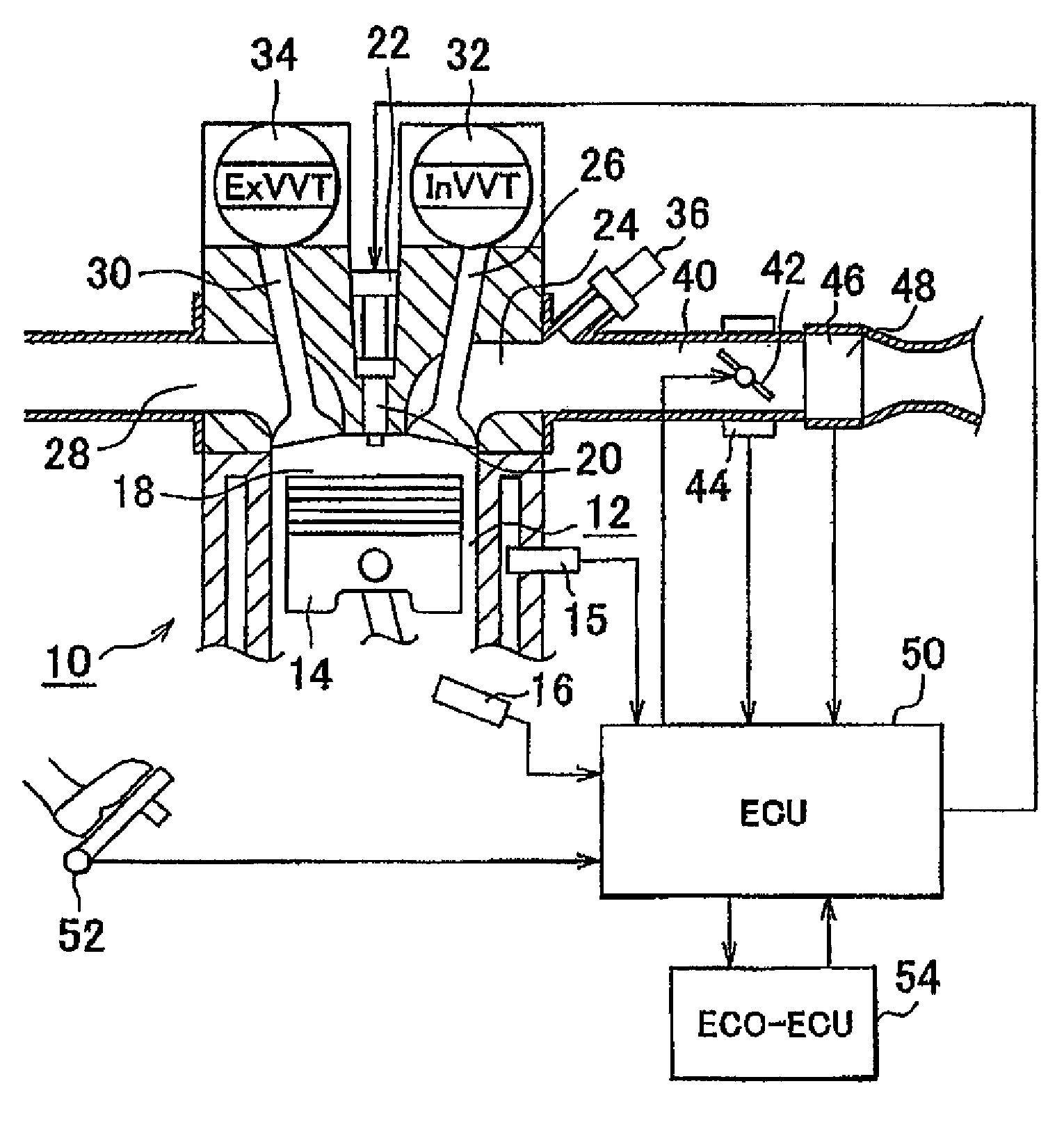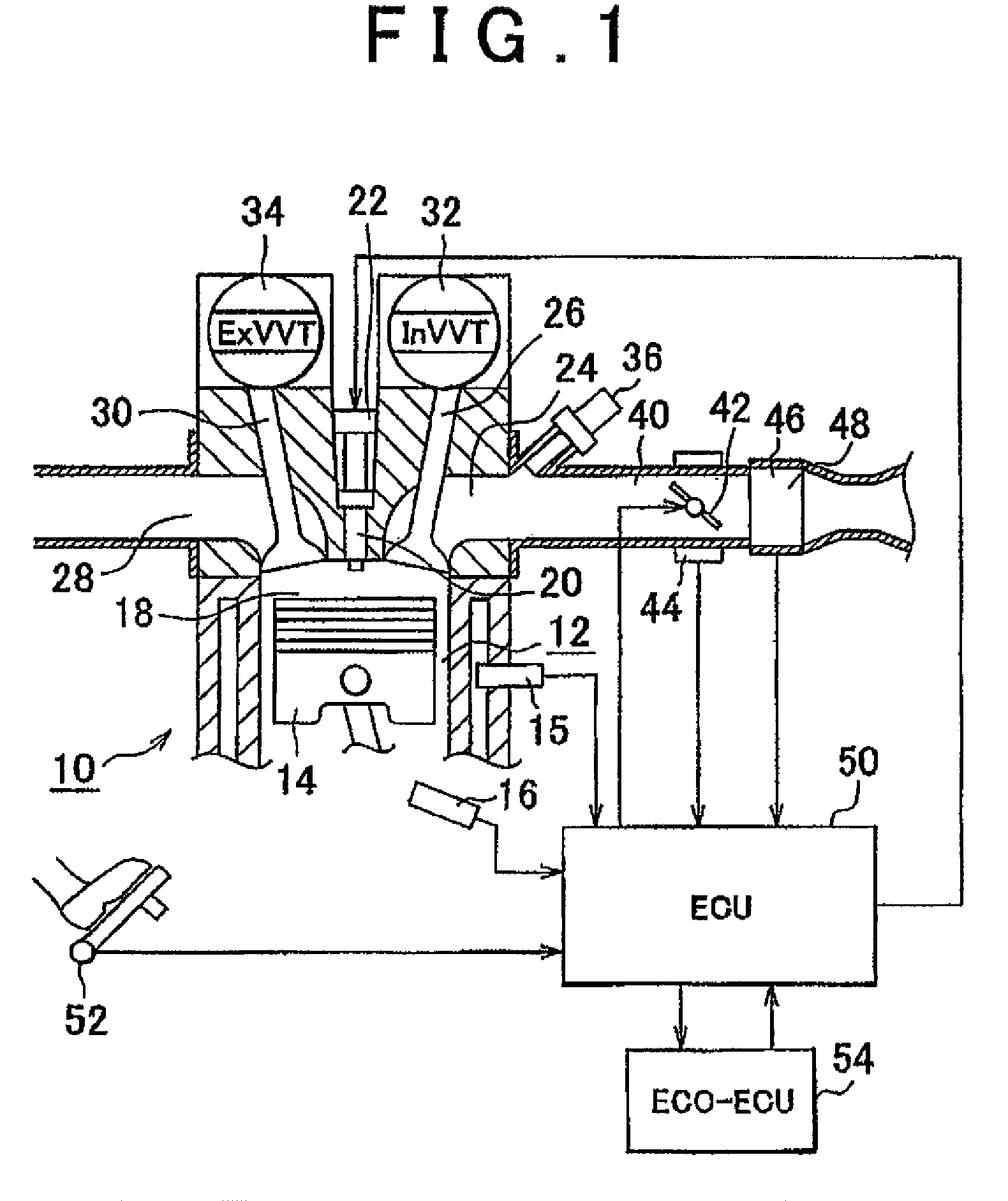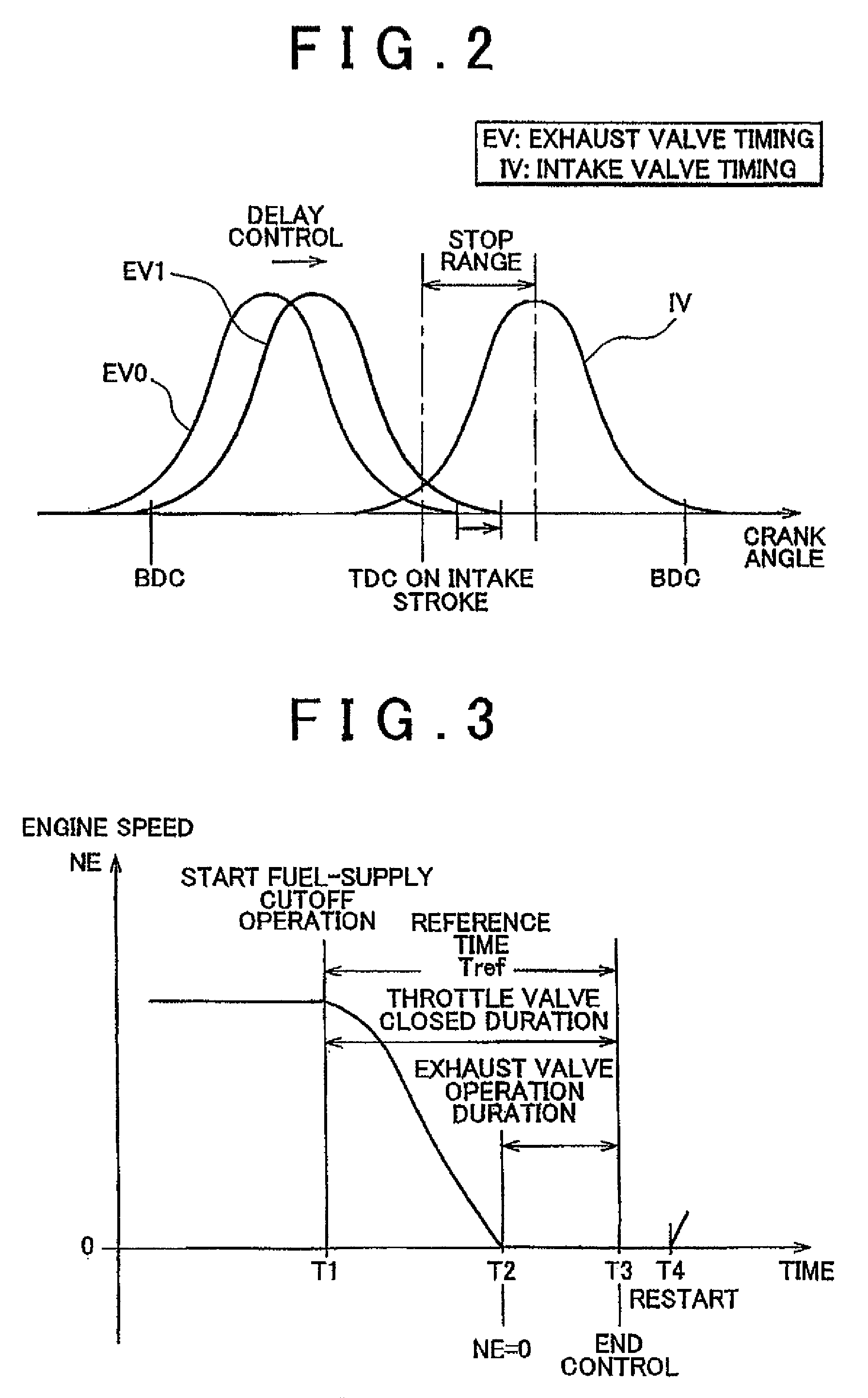Control apparatus and method for internal combustion engine
a control apparatus and internal combustion engine technology, applied in the direction of electric control, ignition automatic control, instruments, etc., can solve the problems of high possibility, frequent stoppage and start of internal combustion engines, and high possibility, so as to improve startability and prevent autoignition
- Summary
- Abstract
- Description
- Claims
- Application Information
AI Technical Summary
Benefits of technology
Problems solved by technology
Method used
Image
Examples
first embodiment
of the Invention
Structure of System According to First Embodiment of the Invention
[0073]FIG. 1 is a view schematically showing the structure of an internal combustion engine system according to a first embodiment of the invention. The system shown in FIG. 1 includes an internal combustion engine 10. The internal combustion engine 10 includes cylinders 12. Although FIG. 1 shows the cross-section of only one cylinder 12, the internal combustion engine 10 actually includes the plurality of cylinders 12. A piston 14 is arranged in each of the cylinders 12. Each piston 14 is connected to a crankshaft (not shown) via a connecting rod. A coolant temperature sensor 15 (a coolant temperature detection unit) 15 that detects the temperature of a coolant is fitted to each cylinder 12. An engine speed sensor 16 that transmits a signal indicating the rotational speed of the internal combustion engine 10 is provided near the crankshaft.
[0074]A spark plug 20 is fitted at the center of the ceiling (...
second embodiment
of the Invention
[0122]A system according to a second embodiment of the invention has the same structure as that of the system according to the first embodiment of the invention. The system according to the second embodiment of the invention executes the same control as the control executed by the system according to the first embodiment of the invention except that it is determined, based on the coolant temperature and the stop position of the piston in the initial intake-stroke cylinder, whether the opening / closing timing of the exhaust valve 30 should be delayed by the reference delay amount X0 in the autoignition prevention control that is executed when the internal combustion engine 10 is at standstill.
[0123]FIG. 6 is a graph showing the relationship between the coolant temperature and the amount of delay correction made to the reference delay amount X0 for the exhaust valve 30. FIG. 7 is a graph illustrating the opening / closing characteristic of the exhaust valve 30, which is e...
third embodiment
of the Invention
[0141]A system according to a third embodiment of the invention has the same structure as that of the system according to the first embodiment of the invention. The system according to the third embodiment of the invention executes the same control as the control executed by the system according to the second embodiment of the invention except that a control over the opening / closing characteristic of the intake valve 26 is executed during the autoignition prevention control.
[0142]FIG. 11 is a graph illustrating the control over the opening / closing characteristic of the intake valve 26 in the system according to the third embodiment of the invention. In the third embodiment of the invention, the opening / closing characteristic of the intake valve 26 is controlled so that the opening amount of the intake valve 26 of the initial intake-stroke cylinder matches a predetermined reference opening amount Y0 (engine-stop reference opening amount) during the autoignition preven...
PUM
 Login to View More
Login to View More Abstract
Description
Claims
Application Information
 Login to View More
Login to View More - R&D
- Intellectual Property
- Life Sciences
- Materials
- Tech Scout
- Unparalleled Data Quality
- Higher Quality Content
- 60% Fewer Hallucinations
Browse by: Latest US Patents, China's latest patents, Technical Efficacy Thesaurus, Application Domain, Technology Topic, Popular Technical Reports.
© 2025 PatSnap. All rights reserved.Legal|Privacy policy|Modern Slavery Act Transparency Statement|Sitemap|About US| Contact US: help@patsnap.com



